Have you ever slipped on a certain color and instantly felt lighter, happier, or more at ease? It’s not just in your head what we wear truly has the power to influence how we feel. Fashion isn’t only about trends or looking good; it can be an extension of how we care for ourselves. Enter the world of therapeutic fashion colors, where the hues in your wardrobe can offer more than style they can support your emotional well-being.
Color has long been used as a tool for healing, from ancient color therapies to modern-day design psychology. In fact, the colors we surround ourselves with especially in what we wear can subtly impact our mood, energy levels, and even our sense of confidence. Think about it: there’s a reason people reach for calming blues on stressful days or bold reds when they want to feel powerful. Fashion becomes a form of self-expression and self-soothing, rolled into one.
In this post, we’ll explore the psychology behind fashion colors and how certain shades can bring balance, energy, comfort, or calm to your life. Whether you’re dressing to reduce anxiety, spark creativity, or just feel more like yourself, the right color can set the tone literally and emotionally.
You’ll also discover answers to questions many people ask, like “What colors are therapeutic?” and “What is the best color for healing?” We’ll walk through the emotional impact of specific colors, share outfit ideas, and offer practical tips on how to build a wardrobe that feels as good as it looks.
So if you’ve ever wondered how to use fashion as a form of daily therapy, you’re in the right place. Let’s explore how a simple color shift can bring a little more peace, joy, and energy into your everyday life starting with your closet.
What Are Therapeutic Fashion Colors?
Therapeutic fashion colors refer to hues that evoke specific emotional or psychological responses when worn. These colors are more than just aesthetic choices they’re tools that can influence your mood, energy, and mental well-being. In the same way music or scent can change how we feel, colors can act as silent mood boosters or calming anchors woven right into your outfit.
Color therapy, also known as chromotherapy, is the idea that colors can be used to enhance our mental and physical health. While this concept may seem spiritual or abstract, it’s backed by both psychology and everyday experiences. For instance, hospitals often use soft blues and greens in patient rooms because they are proven to promote relaxation. Similarly, red is known to increase alertness and energy one reason it’s often associated with power and passion.
When you apply this theory to fashion, it becomes clear that the colors you wear can act as a form of self-care. Your outfit becomes more than just something to be seen in it becomes something to feel good in. Wearing the right colors on the right days can help you set your emotional tone, support your mental health, and even influence how others interact with you.
Therapeutic fashion isn’t about wearing one “perfect” color it’s about tuning in to how different shades make you feel and learning how to dress with intention. Whether you’re looking for calm during a stressful time or needing a confidence boost before a big presentation, your clothing choices can offer subtle yet powerful support.
In this post, we’ll explore different therapeutic colors and what emotions they help cultivate. From calming neutrals to energizing bright every color holds the potential to positively impact your daily life. It’s not about fashion rules it’s about personal well-being, self-expression, and feeling aligned from the inside out.
What Is the Best Color for Healing?
When we talk about healing through color, we’re not just referring to physical wellness emotional and mental healing are just as important, especially in today’s fast-paced world. While many colors can play a role in healing, green consistently stands out as the most recognized therapeutic color for holistic well-being.
Let’s explore why green is considered the best color for healing and how other hues can also support different kinds of recovery.
Why Green Is the Ultimate Healing Color
Green is the color most closely linked to nature, renewal, and balance. It’s what we see in forests, grasslands, and fresh leaves places where people instinctively go to rest, reset, and reconnect. Psychologically, green has been shown to reduce anxiety, slow the heart rate, and promote a sense of harmony and calm.
When worn, green can signal to your body and mind that it’s safe to unwind. It’s especially powerful during times of emotional stress or burnout, helping to restore inner balance and gently guide you back to your center. Earthy greens (olive, sage) are grounding and stabilizing, while fresher greens (mint, jade) offer a sense of renewal and freshness.
If you’re building a healing-focused wardrobe, having a few green pieces like a wrap dress, a soft sweater, or even a green-toned scarf can be both therapeutic and stylish.
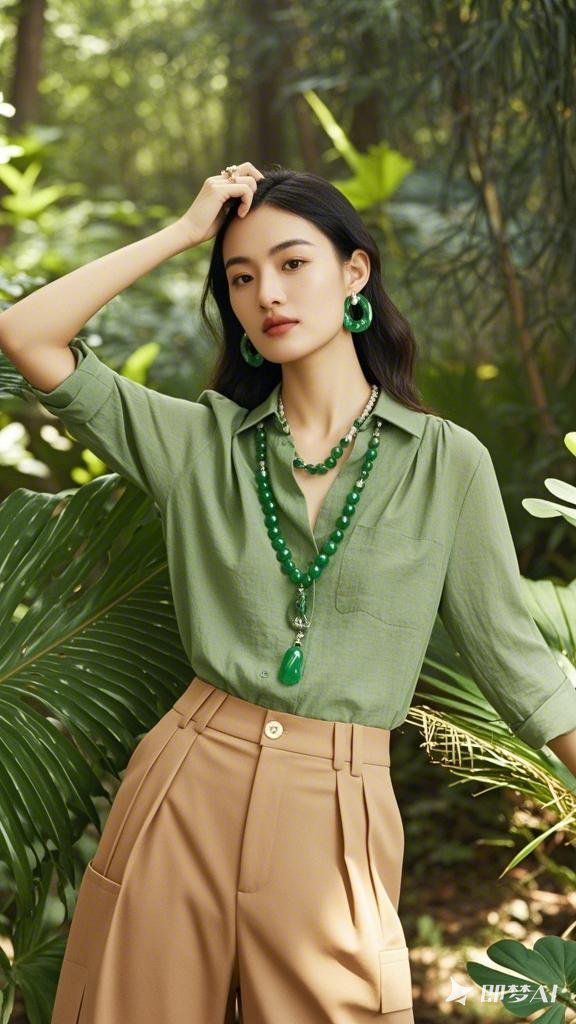
Other Colors That Support Healing
While green leads the charge, here are other color allies in your healing journey:
Blue: A close second to green, blue promotes calmness, clarity, and serenity. It’s ideal for emotional healing, especially during periods of grief, anxiety, or overstimulation. Soft blues (like sky or periwinkle) are especially helpful for promoting relaxation and better sleep.
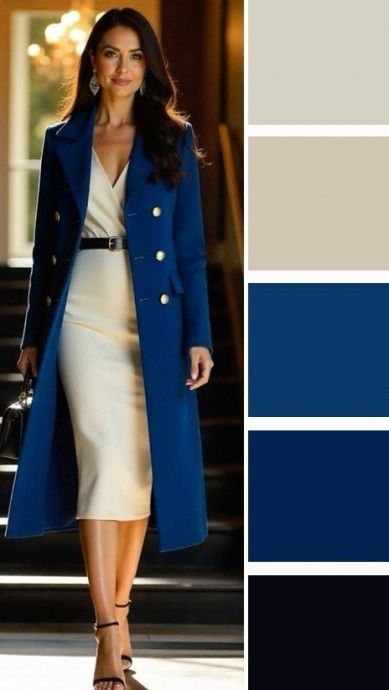
photo credit:https://www.pinterest.com/pin/4925880838163654/
White: Often associated with purity and new beginnings, white brings a sense of mental clarity and emotional detox. It’s perfect when you want to clear your mind and embrace a fresh start.
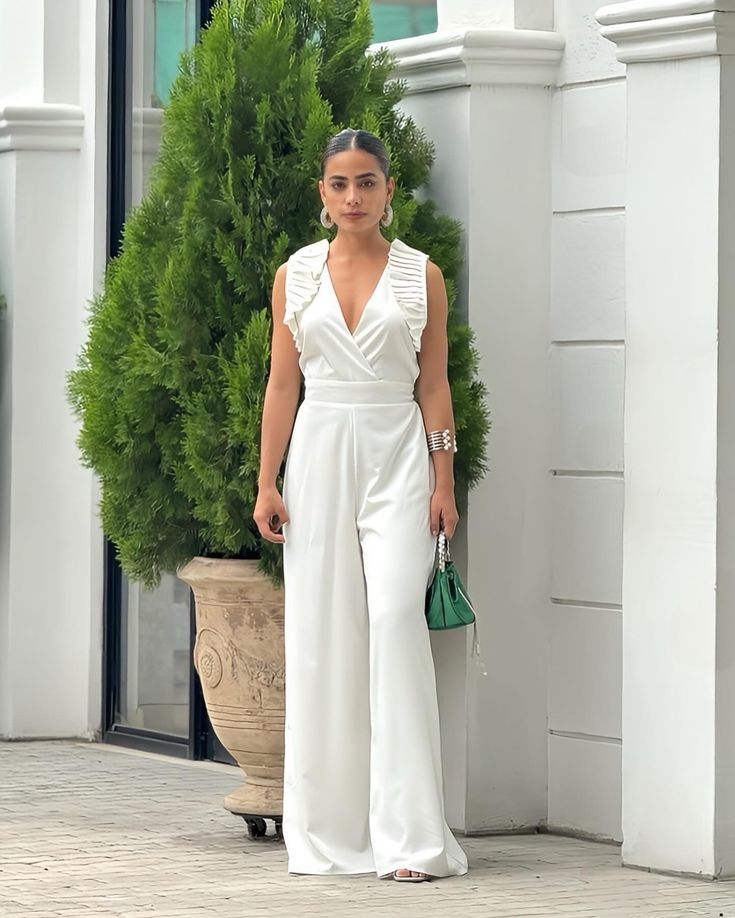
photo credit:vhttps://www.pinterest.com/pin/4925880838163654/
Lavender or Light Purple: These shades encourage spiritual healing and reflection. If you’re working through emotional wounds or navigating a transitional season, lavender can help center your energy.
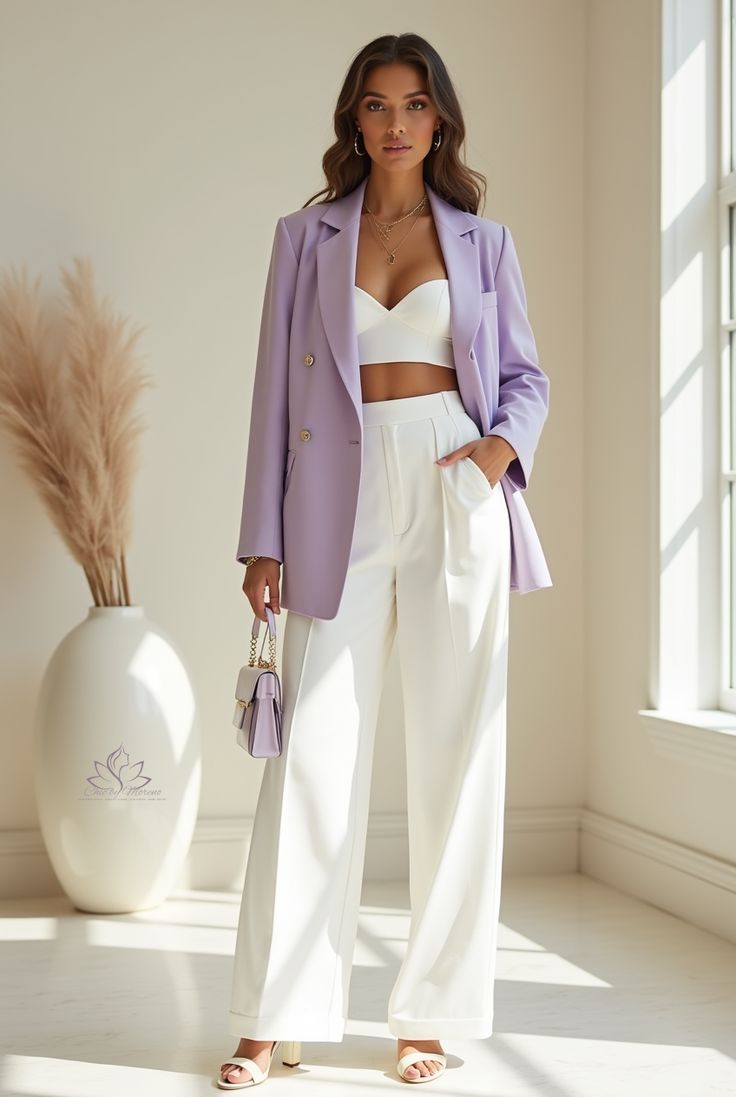
photo credit:https://www.pinterest.com/pin/4925880838163654/
Soft Pink: Pink has a nurturing quality that offers emotional comfort and self-love. It’s ideal when you’re working on healing your relationship with yourself or practicing forgiveness.
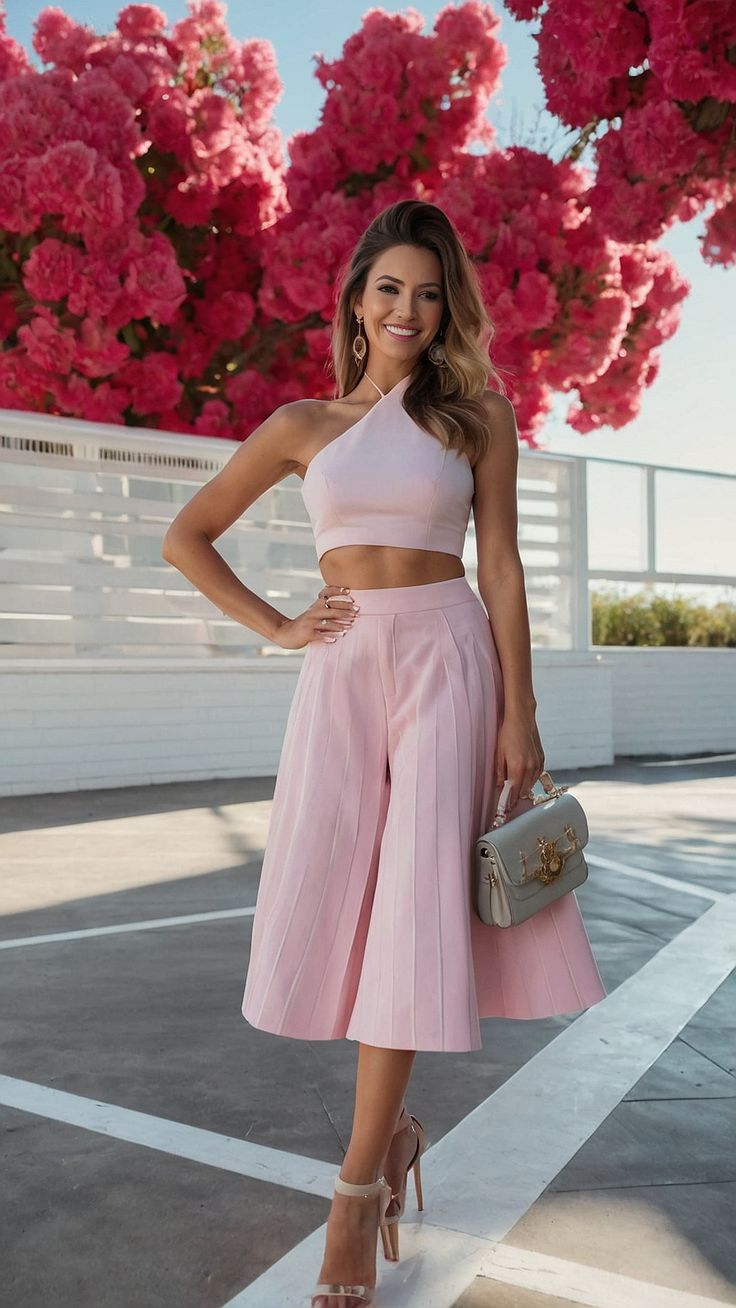
photo credit:https://www.pinterest.com/search/pins/?q=soft%20pink%20therapeutic%20color%20outfit&rs=typed
Choosing a Healing Color That Works for You
While general color psychology provides strong guidelines, the best healing color is ultimately the one that resonates most with you. Pay attention to how you feel in certain shades your body and mood will often give you the best feedback. Healing is personal, and so is the energy you bring into your wardrobe.
Think about it this way: just like your skincare routine or wellness habits, your color choices should support how you want to feel not just how you look. When you intentionally dress in colors that comfort or uplift you, you’re not just choosing clothes you’re choosing healing energy.
How to Use Fashion Colors in Your Daily Life for Emotional Wellness
Wearing color with intention isn’t just a trend it’s a form of emotional self-care. Just like we use music to set a mood or scents to calm the mind, fashion colors can help influence how we feel throughout the day. Think of your wardrobe as a toolkit, and every shade you wear as a tool to help you feel more grounded, empowered, or uplifted.
Here’s how to use fashion colors in your daily life to support your emotional wellness:
Add Healing Colors Through Accessories
Not ready to go full-on bold with therapeutic colors? That’s okay start small. Accessories are a great way to introduce mood-enhancing hues into your wardrobe.
A green silk scarf for calming energy during stressful workdays.
A blue gemstone necklace to encourage serenity and confidence.
A pink headband to tap into self-love and softness.
Even a colorful manicure or pair of socks can serve as a personal boost something just for you, even if no one else notices.
Color-Coordinate with Your Self-Care Rituals
You can take your wellness routine a step further by aligning colors with specific self-care moments:
White or lavender robes for evening wind-down and skincare routines.
Soft pastels during journaling or meditating to invite peace and openness.
Green workout gear for yoga or nature walks to stay grounded.
When you pair colors with habits that nurture you, they become a signal to your brain: “This is my time to restore and reconnect.”
Build a Color-Intentional Capsule Wardrobe
If you want to fully integrate color therapy into your lifestyle, consider creating a color-curated capsule wardrobe. Choose a few key therapeutic colors that align with how you want to feel throughout the week. For example:
Green and beige for calm, balanced days.
Blue and navy for focus and confidence at work.
Coral and yellow for social events or creative projects.
By rotating pieces that reflect your emotional goals, your wardrobe becomes more than just fashion—it becomes a mindset.
Honor Your Emotional Seasons
Just as nature has seasons, so do our emotions. Your color choices can reflect and support what season of life you’re in.
In seasons of growth: Embrace earth tones and greens.
In seasons of healing: Lean into whites, soft pinks, and lavenders.
In seasons of empowerment: Choose bold reds, purples, or black for strength.
Fashion can mirror your healing process or help you step into the energy you’re calling in. Being mindful of this connection turns getting dressed into an act of self-love.
Using color for emotional wellness doesn’t mean tossing out your entire wardrobe. It means looking at what you already have in a new light and making room for a few pieces that support how you want to feel. With time, you’ll start to notice just how much your outfit can shift your state of mind.
The Best Colors to Wear for Specific Moods
Color psychology is all about how different hues affect our emotions and behavior. When used mindfully in fashion, certain colors can help you align with a particular mood or even shift your emotional state entirely. Whether you’re dressing for calm, confidence, creativity, or healing, here’s a breakdown of the best colors to wear based on how you want to feel:
For Confidence & Power – Red, Black, and Navy
Want to walk into a room and feel unstoppable? These colors are bold, commanding, and assertive perfect for when you need an extra boost of confidence.
Red: Sparks energy, power, and attention. Great for speaking engagements or job interviews.
Black: Timeless and elegant. Gives off sophistication and authority.
Navy: A subtler alternative to black that still communicates confidence and professionalism.
Try this: Red lipstick with a black tailored blazer or navy dress pants.
For Joy & Positivity – Yellow, Coral, and Bright Orange
These sunny shades are mood-lifters. They’re great for days when you need to kickstart energy, creativity, or optimism.
Yellow: Associated with warmth and happiness. Even a pop of yellow can uplift your mood.
Coral or peach: Adds friendliness and approachability without being too loud.
Style tip: A yellow scarf or coral top on gloomy mornings can do wonders.
For Self-Love & Compassion – Soft Pinks and Blush Tones
Pink is often linked to nurturing energy and emotional warmth. It’s gentle and affirming, making it a beautiful choice when you need to be kind to yourself.
Blush pink: Calms the nervous system and adds a feminine softness.
Rose tones: Encourage feelings of comfort and affection.
Outfit idea: A cozy rose cardigan or pink satin sleepwear for your self-care nights.
For Focus & Productivity – Earth Tones and Cool Greys
Neutral shades aren’t just chic they help reduce overstimulation and keep you focused and mentally clear.
Taupe, camel, and greige: Create a quiet luxury vibe that’s ideal for focused work sessions.
Cool grey: Balances logic and emotional clarity.
Wear this: A structured grey blazer or camel trousers when working or studying.
For Healing & Renewal – White and Lavender
These colors symbolize purity, clarity, and spiritual calm. They are especially powerful when you’re going through emotional healing or transition.
White: Represents a clean slate. Helps clear mental clutter and boost clarity.
Lavender: Soothes anxiety and fosters emotional healing.
Healing look: A lavender workout set or white linen dress for restorative routines.
Creating a Therapeutic Color Wardrobe That Reflects Your Personality and Emotions
Building a wardrobe that supports your mental well-being doesn’t mean starting from scratch or filling your closet with a rainbow of bold hues unless that’s your vibe! It’s about being intentional with the colors you wear so they work with your mood and personality, not against it. Here’s how to curate a color palette that feels good, reflects your identity, and fits effortlessly into your everyday life.
Understand Your Emotional Needs
Start by reflecting on how you want to feel most days. Are you someone who thrives on calm and clarity? Or do you often need a jolt of energy or motivation? Identifying your emotional priorities will guide which colors you lean into.
Want more peace? Stick with soft blues, greens, and neutrals.
Need more motivation? Add reds, oranges, or jewel tones.
Crave emotional healing? Lavender and blush are your allies.
Tip: Keep a journal for a week and note how you feel in certain colors this helps build emotional color awareness.
Choose a Signature Color Palette
Once you know your emotional goals, select 3–5 core colors that support your daily moods and represent your personality. This becomes your go-to palette.
For example:
A calm and collected soul might pick: sage green, ivory, navy, blush, and soft grey.
A bold creative might lean toward: teal, gold, black, emerald green, and deep red.
Having a palette makes it easier to mix and match, create harmony in your wardrobe, and shop intentionally.
Balance Color with Neutrals
Neutrals like beige, cream, charcoal, and camel help ground vibrant hues and prevent visual overwhelm. They also create a more “put-together” appearance and give your wardrobe long-term versatility.
Pair a bold emerald blouse with taupe pants.
Combine a coral skirt with a white tee and nude sandals.
A balanced wardrobe gives you freedom to shift moods and looks with ease.
Dress for Your Day Emotionally and Practically
Some days, you need confidence. Others, calm. And sometimes, you want to feel creative or grounded. Match your outfit to your schedule and your emotional forecast.
Big presentation? Wear navy or red.
Self-care Sunday? Reach for lavender or cozy earth tones.
Running errands? Try cool grey with a splash of peach.
This thoughtful approach to dressing helps you feel more in control, uplifted, and authentic.
Let Your Personality Shine
Your therapeutic color wardrobe should be a reflection of you, not a rulebook. Whether you’re minimalist, bohemian, edgy, or eclectic colors can support and elevate your look without changing who you are.
Classic girl? look out for deep reds, navy, and camel.
Free spirit? Embrace turquoise, sunflower yellow, and magenta.
Soft and feminine? Lean into rose, lilac, and ivory.
There’s no “one-size-fits-all” approach to color it’s about using it as a tool to nurture your mind and highlight your individuality.
Color isn’t just a visual detail it’s a language your wardrobe speaks for you. When chosen with intention, the colors you wear become daily reminders of how you want to feel, what you value, and how you show up in the world. And that’s a beautiful way to blend style with self-care.
How to Use Color Therapy in Daily Outfit Planning
You don’t need to be a fashion expert or psychologist to use color therapy in your daily wardrobe. The goal here isn’t perfection it’s presence. By using colors intentionally, you can influence your mood, mindset, and even how others perceive you. This section walks you through how to integrate color therapy into your daily dressing habits in a way that’s simple, practical, and totally personal.
Use Accessories to Add Emotional Highlights
If you’re not in the mood to go full-on bright, accessories are a great way to bring in therapeutic color subtly.
Feeling overwhelmed? Wear rose quartz earrings or a soft blue scarf.
Need a burst of joy? Add yellow sneakers or a bold lipstick.
Craving inspiration? Try a colorful printed headband or artistic tote bag.
Color therapy doesn’t require a full outfit sometimes a single splash is enough
Stay Flexible and Have Fun With It
Some days, you’ll wake up and instinctively reach for something unexpected—and that’s okay. Color therapy is a tool, not a rulebook. The key is mindfulness. As long as you’re tuning in to how clothes and colors make you feel, you’re doing it right.
Let your style evolve with your emotions, your seasons, and your personal growth. Your wardrobe can be your mood board, your therapy, and your daily dose of joy ,all rolled into one.
Color is more than just something we see it’s something we feel. Throughout this post, we’ve explored how fashion and therapeutic colors come together to create something deeply personal and empowering. Whether you’re reaching for calming blues during a stressful week or throwing on a bold red dress to reignite your confidence, your wardrobe can become a tool for emotional balance and well-being.
Therapeutic fashion isn’t about following trends or wearing the “right” colors according to someone else’s rules. It’s about listening to yourself, being intentional, and allowing your clothing to reflect the way you feel or the way you want to feel. Each shade you wear holds the power to calm, uplift, energize, ground, or inspire you. And the more you tap into this connection, the more confident and self-aware you become not just in your fashion sense, but in your everyday life.
So the next time you stand in front of your closet wondering what to wear, don’t just ask, What looks good? Ask yourself, What do I need today? How do I want to feel? Let that guide your choice. Because when you dress with intention, you don’t just show up looking good you show up feeling good too.
And remember, this isn’t about perfection. Some days you’ll dress in all black because it’s comforting, other days you’ll surprise yourself by reaching for sunshine yellow. That’s the beauty of therapeutic fashion it’s flexible, personal, and entirely yours.
Leave a Reply